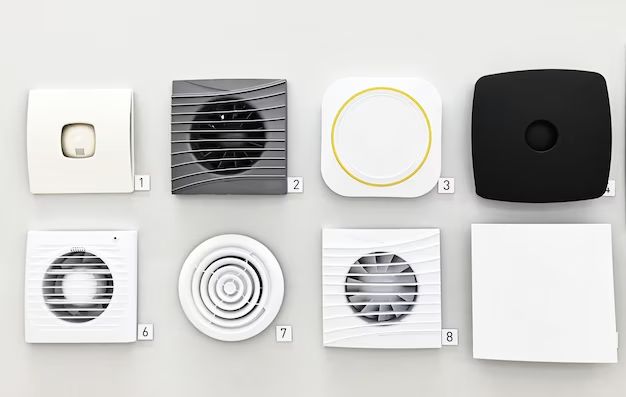Having proper ventilation in the bathroom is crucial for preventing mold growth and removing humidity. Extractor fans are commonly used to ventilate bathrooms, but there are alternatives if installing an extractor fan is not possible.
Page Contents
Why is an extractor fan used in bathrooms?
Extractor fans are the go-to solution for ventilating bathrooms for several reasons:
- They efficiently remove moisture – Extractor fans are designed to quickly remove humid air from the bathroom. This helps prevent condensation buildup which can lead to mold.
- They remove odors – Extractor fans vent bathroom odors outside rather than circulating them throughout the home.
- They meet code requirements – Most building codes require mechanical ventilation in bathrooms. Extractor fans are a simple way to meet this requirement.
By actively ventilating the bathroom, extractor fans reduce humidity levels and improve air quality. However, they do require ducting to the outside which can add cost and complexity to installation. This is why finding alternatives may be preferable in some cases.
Ventilation alternatives to extractor fans
Here are some ways to ventilate bathrooms without installing an extractor fan:
Open a window
Opening a window in the bathroom helps let fresh air in and humid air out. This relies on natural wind flow rather than mechanical ventilation. The downside is that windows may not be openable in all bathrooms, and even open windows do not provide as strong exhaust as extractor fans.
Install a ceiling vent
Ceiling vents provide passive ventilation without ducting. Vents allow rising warm air to escape while cool air flows in through other openings. This helps remove humidity and odors. However, ceiling vents are not as effective as powered fans at rapidly removing air.
Use a dehumidifier
A dehumidifier can lower humidity levels in the bathroom by condensing water from the air. Models with drying modes are designed to maintain lower humidity. While they do not actively ventilate air, dehumidifiers prevent problematic moisture buildup.
Open the door when showering
Keeping the bathroom door open while showering allows air circulation with the rest of the home. This can utilize airflow from windows or ventilation in other rooms. However, this may not be practical for privacy or heating/cooling loss through the open door.
Use an exhaust fan
Small exhaust fans can be mounted on the wall rather than ceiling. They are less obtrusive than large extractor fans and don’t require ducting outside. However, wall mounting means they have less exposure for removing humid air.
Key considerations for ventilation without extractor fans
When weighing extractor fan alternatives, here are some important factors to consider:
Ventilation rate
The alternative method should adequately exchange air in the bathroom. Passive options like windows and vents provide lower air change rates than powered fans.
Moisture removal
It must effectively lower humidity coming from hot showers. Passive ventilation and dehumidifiers may not remove moisture fast enough.
Location
The ventilation should be placed where it can best capture and remove humid air. Ceiling mounting is optimal for venting rising moisture.
House air leakage
Older homes with higher air leakage don’t require as powerful mechanical ventilation. Newer airtight homes rely more on fans to actively bring in outdoor air.
Use frequency
Bathrooms used more often have higher humidity output requiring stronger ventilation.
Building regulations
Local regulations may require a mechanical fan. Passive alternatives may not satisfy code requirements for mechanical ventilation.
Mold risk
Bathrooms prone to mold issues need effective moisture removal. This may rule out more passive ventilation options.
Occupant needs
Those sensitive to odors or humidity may require a more powerful fan rather than a passive alternative.
Comparing extractor fans and ventilation alternatives
Here is a comparison of key characteristics between extractor fans and common alternative ventilation methods:
| Ventilation Method | Airflow Rate | Moisture Removal | Location Flexibility | Operating Cost |
|---|---|---|---|---|
| Extractor Fan | High | High | Low – Requires ducting | Moderate – Electrical costs |
| Passive Ceiling Vent | Low | Low | High | Low |
| Wall Exhaust Fan | Moderate | Moderate | Moderate | Low |
| Open Window | Low/Moderate | Low | Low if no window | Low |
| Dehumidifier | Low | Moderate | High | Moderate – Electrical costs |
Conclusion
Extractor fans are the most effective solution for ventilating humid air out of bathrooms. However, alternatives like passive vents, dehumidifiers, and open windows can potentially work in some cases where installing extractor fans is not practical. The key is to ensure humidity is adequately controlled and ventilation meets local requirements. Passive alternatives often fall short of powered extractor fans when it comes to rapid moisture removal and meeting building code. But they can be cheaper, easier to install options that may suit some situations.
